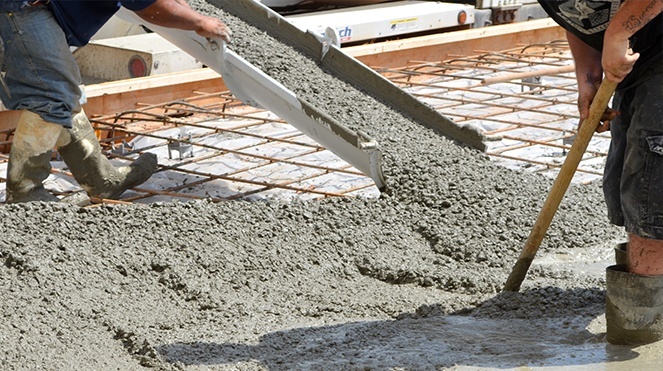Posted on February 15, 2024
The Natural Resources Defense Council (NRDC) notes that cement production is “so carbon intensive that even though cement makes up less than 15% of concrete by weight, it accounts for 90% of concrete’s carbon footprint.”
The use of fossil fuels to fire cement kilns is a key source of these carbon emissions. Coal fuels many of the nation’s power plants, cement plants, and more. According to the United States Geological Survey (USGS), U.S. production was 92 million metric tons in 2021. Although this volume is significant, it pales in comparison to China and India. The former produces 2.5 billion tons per year; the latter produces 330 million tons.
In 2022, the Energy Information Administration (EIA), calculates that the electric power sector consumed 91.7% of U.S. coal.
Nonetheless, U.S. cement plants still use a lot of coal, including those in California. A decade ago, coal and petroleum coke were the primary kiln fuels in more than 90% of U.S. cement plants, according to the Portland Cement Association (PCA). At the same time, two-thirds of these plants also used alternate fuels to some degree. Today, this transition continues as cement plants respond to government emissions mandates.
California Cement Plants: Energy Use
California has 12% of the U.S. population while accounting for 15% of the economy. The state is about to overtake Germany as the planet’s fourth largest economy.
Not surprisingly, California is the nation's second largest producer of both ordinary Portland cement (OPC) and blended cement. The USGS notes that California’s cement production increased from 10.05 metric tons (Mt) in 2019 to 10.57Mt in 2021. Consumption will likely accelerate further in 2024 as the industry feels the impact of the infrastructure bill.
All this production consumes a great deal of fuel. Climateworks notes that California’s cement plants “are among the largest consumers of coal in the state.” Collectively, these facilities consume enough energy to power 2.3 million California households. And, coal and petroleum coke account for more than 70% of that energy. In 2015, the state's cement plants used enough coal and petroleum coke to fill 7,500 railcars.
California Cement Plants
Cement plants fueled California’s prodigious economic growth in the 20th century. The nation's industrial needs skyrocketed during World War II in particular. At that time, Henry Kaiser opened the Cushenberry quarry to supply his steel mill in Fontana, 50 miles east of Los Angeles. A cement plant followed in 1957, and Mitsubishi Cement bought it three decades later. Today, it is one of the leading industrial facilities in the Victor Valley.
Consolidation is part of the recent history of the state’s cement industry. There were 11 cement plants in the state as recently as 2008. Nine remained into 2017. The cement kiln at the Permanente complex near Cupertino was shuttered in 2020. There are currently seven cement plants in California:
Three plants in the Mojave Desert north of Los Angeles
Three plants approximately 90 miles east of Los Angeles
One just north of Redding
In June 2022, CalPortland acquired the Redding cement plant from Martin Marietta. It emitted about 282,000 tons of carbon dioxide in 2020 — equivalent to about 55,000 gas-powered cars.” Still, California cement emissions decreased about 20% from 2000 to 2015. This was due to increased energy efficiency and a greater use of lower-carbon fuels.
California: Net Zero Concrete by 2045
Gov. Gavin Newsom signed SB 596 in September 2021. The law requires strategic planning designed to reduce GHG emissions to 40% of 1990 baseline levels by 2035. Furthermore, it requires net-zero GHG emissions in the state by 2045. To help meet these prodigious goals, it also funds decarbonization research and implementation.
Oil and gas is California’s largest industrial source of carbon emissions. Cement is second. In 2017, CA cement plants produced two percent of the state’s total GHG emissions.
In May 2023, the California Air Resources Board (CARB) hosted a workshop designed to advance a plan to meet the state's Net Zero mandates. Key goals were set spanning the time from the present to 2045:
z2023: Develop a comprehensive strategy to achieve net- zero emissions by 2045
2028: Assess the feasibility of achieving the interim targets
2035: Interim targets (40% below the 2019 average GHG intensity)
2045: Net-zero emissions for cement use in California
Decarbonize the industry
California’s primary sources of the decarbonization of cement, ranked in order of importance through 2040, are:
Carbon capture, utilization, and storage (CCUS)
Clinker substitution via SCMs
Switching from fossil fuels to alternatives
Energy efficiency
Government policies
Government policies also advance the net zero agenda. The 45Q tax credit for carbon sequestration is an example at the federal level. The Buy Clean California Act (BCCA) requires the Department of General Services (DGS) to set Global Warming Potential (GWP) limits. The state’s California Cap-and-Trade Program covers about 80% of its GHG emissions. It incentivizes investment in greener technologies.
The Net Zero Quest
Given the size and complexity of the cement/concrete industry, future limits on carbon and other GHG emissions are fast approaching. As CARB notes, “In the cement sector, 2045 is only one investment cycle away.” In the quest for carbon neutrality, time is of the essence.
About PACA
The Pennsylvania Aggregate and Concrete Association (PACA) reports on the latest developments in the industry through this site. Our team welcomes questions about your upcoming concrete project. Please contact us at your convenience.

